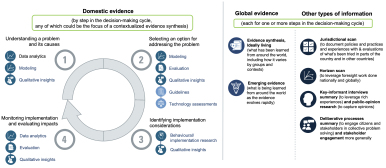Blog Post
AcademyHealth Senior Conferences Manager explains the ARM abstract selection process ahead of the 2024 Annual Research Meeting happening this June 29-July 2 in Baltimore, MD.
Blog Post
AcademyHealth member and HDLI panelist Dr. Kellan Baker and Caroline Medina, data equity experts at Whitman-Walker Institute, share why it’s critical for the field of health services research to collect and use high-quality data on sexual orientation and gender identity to guide the provision of optimal care for all and to close LGBTQ population health disparities.
Blog Post

Old approaches to informing decision-makers with health system evidence have often moved too slowly and presented a single form of evidence
Blog Post
Health Data Leadership Institute panelist and CEO of Manifest MedEx, Erica Galvez, highlights the role of collaborations and partnerships to improve public health.
Past Event
This 90-minute session provided an overview of the initiative and its five Demonstration Sites working to improve models of care for CMC.
Date & Time April 23, 2024, 12:00-1:30 p.m. ET
Blog Post
This month’s "Read on Washington," available only to AcademyHealth members, includes updates on appropriations, the release of the President’s Budget, updates to the CMS guidance on data access, OMB seeking how to better support public participation, and more.
Blog Post
New Scholar focused on ethics and trustworthiness joins AcademyHealth and the ABIM Foundation’s ongoing collaboration to investigate trust dynamics between organizations, providers, and patients.
Blog Post
Read more about for his plans to carry on the mission of using HSR to improve health and health care for all.
Blog Post
It’s not enough to publish evidence and hope it finds a good home. AcademyHealth’s Communicating for Impact course, offered May 1-15, provides foundational skills to help researchers ensure their work reaches the people who need it most.
Blog Post
On March 6, reproductive health and justice experts shared their thoughts on the role of health services research in examining the wide-ranging impact of the Dobbs decision. These are Dr. Monica McLemore’s remarks on the importance of community-engaged approaches to conduct this research.
